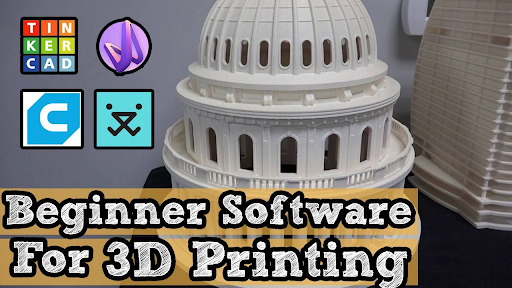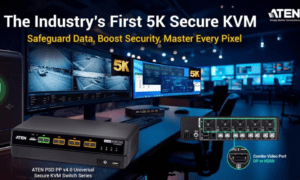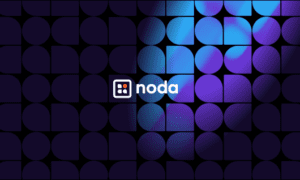You’ve recently purchased your very first 3D printer. The tool is assembled; however, you’re confused about what to print and how to design it. Well, the answer begins with the correct software. Selecting the correct 3D printer design software is the key if you’re keen to convert your digital concepts into actual objects. The right selection makes it effortless to produce, change, and get models ready for printing. Today’s post compares the top beginner 3D printing software options.
What Does 3D Printer Design Software Do?
Before hitting “print”, you require a digital blueprint. Here comes 3D printer design software. It produces, corrects, or prepares digital blueprints for printing.
Besides, it manages the 3D printer, controlling the whole procedure of shifting digital models into real things. There exist two major categories of 3D printer software:
1. CAD Software
CAD denotes Computer-Aided Design. This software is utilized to generate 3D prototypes, and these prototypes function as the foundation for printing. The example file kinds are .STL, .OBJ.
The purpose of this type of 3D printer design software is to produce and improve shapes, thorough components, and models. CAD equipment allows you to make your things starting from nothing, and a few bring copy and paste features.
While others bring complete accuracy modeling equipment. That said, newbies must begin with devices that clarify the procedure.
2. Slicer Software
The slicer software prepares the prototype for printing. It shifts the 3D models into thin films and generates commands for the 3D printer. Its input is a 3D model (generally an .OBJ or .STL file), and the output is a G-code file having coat-by-coat printing directions.
The slicer manages the way the printer extrudes, shifts, and develops the thing. Moreover, a slicer decides print pace, the height of the layer, supports, and temperature. The slicers with presets and practice tools are important for beginners to prevent misprints.
Features to Look for in Beginner-Friendly Software
The best 3D printing software is a certain that is convenient for you. Not every 3D design software is for the less experienced. Below are the essential features to consider while selecting software:
Simple User Interface
New users must pick out software with an easy-to-use interface, which includes a simple menu, point and click choices, and visual references for fast understanding of functions.
Moreover, icons must be tagged plainly, and navigation must not demand innovative technological expertise.
Pre-Built Shapes and Templates
Softwares that provide primary forms, such as cylinders, cubes, and spheres, makes it simpler to make customized things. For common things (like phone stands or keychains) templates let newbies begin planning without having to start from the ground up.
Cloud-Based vs. Installable
- Installable software operates on-site on the computer and mostly offers additional features; however, it utilizes further system resources, for instance, FreeCAD.
- Cloud-based software operates in a browser, needs no installation, and functions on the majority of tools, for instance, Tinkercad.
File Compatibility
Your selected software must assist normal 3D file formats, such as.STL and .OBJ, as most slicer software and 3D printers welcome these formats.
The file agreement guarantees smooth movement from plan to print without alteration problems. Moreover, select a software that assists with the settings of your 3D printer or firmware.
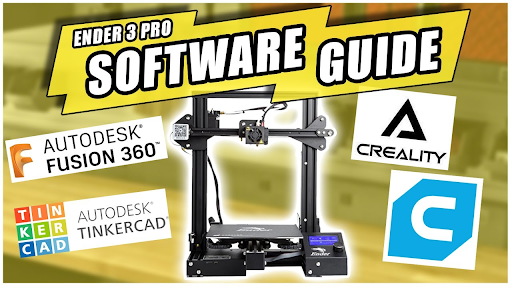
Top 3D Design Software Options for Beginners (CAD)
There are numerous user-friendly and free 3D design software options made for beginners. Here are three famous alternatives:
1. Tinkercad
Tinkercad is a novice, web-based, free 3D software designed by Autodesk. It allows you to pull basic shapes on a workspace and unify them to produce 3d prototypes. Its learning curve is almost flat, and the interface is colorful, simple, and copy-and-paste.
The modeling style utilizes simple modifiers and geometric blocks to develop models. That said, Tinkercad exports straight to .OBJ and .STL formats. This 3D printer software is best for teachers, students, and hobbyists who with to generate key 3D models.
The Reddit users constantly name it “great start” when seeking entry-level 3D design software.
Pros:
- For absolute beginners.
- Involves experiential lessons for primary purposes.
- No attachment needed; operates in the majority of advanced browsers.
Cons:
- Needs an internet connection
- Restricted modeling difficulty.
2. SketchUp Free
Desire to make easy 3D things in the absence of a learning curve? Several newbies can utilize SketchUp to produce their initial functional model within an hour. This is a cloud-hosted version of the popular SketchUp modeling suite.
Initially designed for architects, this tool is a master of making straight-line models, furniture, or geometric-based things. Just sketch a 2D form and then pull it into 3D space. SketchUp Free supports .STL, .SKP and .PNG file formats.
Pros
- Highly accessible for web-based usage.
- Best for home and spatial design.
- Free for personal purposes
Cons
- Demands quick fixes or plugins for 3D printing formats.
- A few features are shut behind the paid version.
3. FreeCAD
FreeCAD is a free, parametric, and recomputed 3D modeling software. It provides extra adaptability and depth as compared to SketchUp and Tinkercad. The features involve architectural equipment, robotic miniatures, and a path module for CAM (Computer Aided Manufacturing).
With FreeCAD, you can create actual things of every size, and editing with parametric elements is like child’s play. It supports .STEP, .STL, .OBJ and more file formats. FreeCAD is best for tinkerers, engineers, and innovative hobbyists.
Pros
- Completely free and
- Aid with mechanical design and technical drawing.
- Functional user community
Cons
- The interface might overburden newbies.
- Not as instinctive as other beginner equipment.
Below is a comparison table for the best 3D printer design software:
| Software | Type | How It Compares to Others | Ideal For |
| Tinkercad | Web-based | Easiest to learn, offers basic modeling tools, and fastest setup | Students, hobbyists, simple functional prints |
| SketchUp Free | Web-based | Better for spatial design; more intuitive for architectural concepts | Home/furniture models, space visualization |
| FreeCAD | Installable | Most advanced; allows parametric modeling and precision measurements | Engineering parts, mechanical design |
Best Slicer Software for Beginners
Slicer software is a key player in the 3D printing procedure. It converts 3D models into commands your printer can grasp. These commands, written in G-code, manage the way the printer develops the thing layer by layer.
Creality Print
Creality Print is a self-manufactured Fused Deposition Modeling slicing software designed by Creality. It provides a simple interface and integrated profiles for Creality tools. Newbies can take advantage of default settings that function better without adjustments by hand.
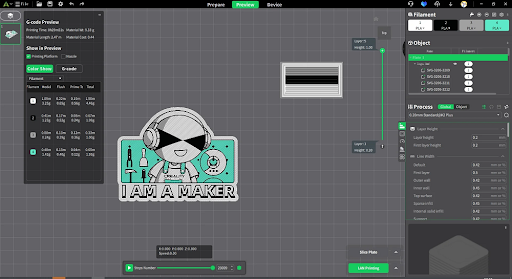
Pros:
- Routine updates and powerful community support.
- Open-source and convenient to download.
- Newbie presets lower the risk of printing faults.
Cons:
- The interface might feel complicated initially.
- It might take time to load on cheap computers.
PrusaSlicer
Another famous free program, developed by Prusa, assists you in getting the model ready for painting. It holds a blend of strong and easy tools, and what sets it apart is the way it allows you to draw supports on your model.
You can just put on support where required, rather than having them all over, consequently, saving time while printing and making clearing up effortless.
PrusaSlicer is appropriate for new users eager to inspect settings such as supports, infill, and layer height.
Pros
- Free and dependable
- Tailor-made and adjustable
- Involves varying layer height and assists in producing
Cons
- Arrangement needs a physical printer configuration for third-party tools.
- The interface could overburden newbies.
Common Beginner Mistakes to Avoid
Absolute beginners mostly repeat the same mistake while beginning. Below is the detail:
- Selecting Advanced Software Too early: Programs such as Blender or Fusion 360 demand intense. So, newbies must start with easy CAD tools ahead of moving to complicated tools.
-
- Skipping Printer Compatibility Inspections: Always confirm that the software approves the 3D printer and slicers ought to forward files in a format that your primer can interpret (generally G-code)
- Using Wrong Slicer Settings: Wrong print pace, layer height, or support setups lead to print failures. Therefore, newbies must utilize default presets till they recognize these choices.
- Exporting the Incorrect File Type: CAD software must forward models as OBJ or STL files. A few newbies wrongly save task files in local formats that slicers cannot interpret.
Conclusion
Don’t forget, the best 3D printer design software for you is based on what you intend to create and your work style. Begin with anything easy, such as Tinkercad, SketchUp Free, and FreeCAD, if you’re a beginner, as they provide beginners with the equipment to make basic models without specialized training. Explore Creality Cloud to get hold of over 1 million 3D models and much more.

